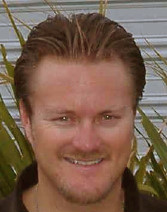IndyCar’s new Race Director outlines his changes
 |
| Beaux Barfield |
Tuesday morning in Indianapolis, IndyCar's new Race Director, Beaux Barfield, reviewed the changes he has planned for the 2012 season. Besides introducing his new Race Stewards, Barfield reviewed some of the changes that include qualifying heat races for some ovals (instead of boring single car qualifying), better communications between race control and the teams, the elimination of double file restarts on some of the ovals, and the plan for trying standing starts later in the year.
New Stewards
Gary Barnard from Champ Car
Johnny Unser former driver
Arie Luyendyk former driver and Indy 500 winner
It will be Barfield's role to explain in the drivers meeting as to what behavior is expected from the drivers on the track for that event. Every track has its nuances. The agreements/expectations made in the drivers meeting for a given event will be taken into race control and decisions will be made based on that.
 |
| (L to R) Race Stewards Arie Luyendyk, Beaux Barfield, Johnny Unser and Gary Barnard |
Stewards will have a more disconnected role. Barfield, as race director, will be primary decision maker in race control. If a Steward does not agree, they will be able to voice it, or Barfield can ask their opinion, if he wants to. If a Steward sees that the race director is making a wrong call because, say, he was not allowed to make that call based on the rule book, they can speak up before the call is actually made and the correction made. But Barfield made it clear that he will be in control in the booth.
A new text messaging system will be used to communicate with teams over the computer network IndyCar sets up at each race. It will be private and allow race control to communicate with teams directly. Instead of an eight step process to get feedback from drivers in the old system, the new system is a four step process. So in the case of the rain in Loudon the Race Director would have had, very quickly, numerous instant messages on his screen that the track was too wet to go green. There no plans at this time to make any of this communication available to the fans.
Race Control will be on channel one this year. Channel two will become a grounds operation channel so teams will no longer have to monitor channel two. So teams will have just one radio channel to monitor. This and the text messaging will streamline communications between race control and the teams.
Double File restarts will be retained, but on some ovals they will use single file restarts. Oval qualifying heat races will be implemented at some races. This will improve boring single car qualifying. He is thinking of 25 to 30 lap heat races with their starting lineup based on practice times.
For example qualifying for the June 22nd race at Iowa will consist of three 30-lap heats, and the field in each heat will be set by practice times. One heat will determine the top 10 starting spots, the other two heats will determine odd-numbered starting positions 11 to 31 and even-numbered starting positions for 12 to 32.
Some teams expressed concern about the number of tires they will have for the qualifying heat races. The answer was that they will get the same number of tires as before, the same as for single car qualifying. No decision has been made yet on whether tire changes will be allowed for the heat races.
The series will revert to single-car qualifying for the season finale at Auto Club Speedway in California.
Standing starts will be evaluated with the hope of doing some by the end of the year.
Teams are looking for more consistent decision making. Barfield said he has a highly developed menu of penalties that will be used. So the same penalty will be given for the same infraction, race in and race out.
As far as blocking, Barfield will allow a driver to move once to deter a following driver from getting under him, but once a driver gets any part of their car alongside, then the leading driver can no longer keep moving over.
They can move back to allow that trailing driver to try a pass, but if the driver trailing moves across and then tries an outside pass, the leading driver cannot then move back to the outside. That would be considered a block and a penalty will be called.
The season will start with no Push-To-Pass option for the driver to use, but it may be considered later in the year. No KERS is planned as well.
The long yellows that take the rhythm out of the race are being addressed. It was suggested not closing the pits, but was dismissed, at least for now. The race leader should have the first opportunity to pit, and if you do not close the pits when a caution flies, that may not happen. Much effort has been made to shortening the yellows. They will try to reduce full course yellows and use more local yellows. Barfield is mindful that he cannot put the safety team in danger.
Race Control will have visual of the entire track but you are still at the mercy of the camera person and what they are focused on. The camera may be filming something away from where a fraction has occurred.
Barfield is considering moving the lapped cars out of the way, say, if a yellow occurs in the last 15 laps of the event.
